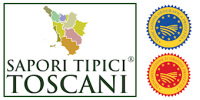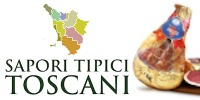Our network:
Saturday 21 December 2024
The July and August Palio
The Palio of Siena takes place twice a year, on July 2nd and August 16th. On very special occasions a third Palio is held, termed straordinario, the first of which took place on June 2nd 1861 to celebrate the newly proclaimed unified Kingdom of Italy.
Although essentially a horse race, the many rules that govern the Palio set it apart from any other mere sporting event of its kind.
Both Palios are preceded by a lengthy and highly colourful procession, in which each competing Contrada – or faction – marches in costume preceded by flag throwers until all the city’s areas have paraded into Piazza del Campo, which is covered in earth.
Once the start has been validated by a shot from the mortaretto, the ten contenders race around the square to the deafening sound of the cheering crowds. The winning Contrada gets the Palio, a richly decorated banner.
Since 1656 the July 2nd Palio has been dedicated to the miracle of the Madonna di Provengano, which took place on July 2nd 1594 when a man named Provenzano Salvani discovered an image of the Virgin in a house in the Contrada della Giraffa area. A church was built on the spot and the image is still venerated today.
The July 2nd Palio was the first to be run in Piazza del Campo and is referred to as the tonda version of the race as opposed to the lunga version that took place lengthwise along the streets on August 15th, with the finishing line in Piazza Duomo.
A second Palio delle Contrade was introduced later, at the beginning of the 18th century, and dedicated to the Assumption, or Assunta, because it takes place on August 16th – the Feast of the Assumption. Following the controversial victory of the Contrada dell’Oca in the July Palio of 1701, the Contrada dell’Oca itself requested that a second Palio should be raced as a means for the other Contrade to win back the title. In 1774 the city of Siena made it official that each year there were to be two Palios, one on July 2nd and the other on August 16th.
Although a secular event, the Palio nonetheless has a strong religious element. To begin with, both races are dedicated to the Virgin. Before the race each Contrada performs a special blessing ritual for jockey and horse in the Contrada Chapel. After the race, the members of the Contrada whose horse has won the race go to give thanks in the Basilica of Provenzano for the July Palio and in the Duomo of Santa Maria Assunta for the August Palio.
Although essentially a horse race, the many rules that govern the Palio set it apart from any other mere sporting event of its kind.
Both Palios are preceded by a lengthy and highly colourful procession, in which each competing Contrada – or faction – marches in costume preceded by flag throwers until all the city’s areas have paraded into Piazza del Campo, which is covered in earth.
Once the start has been validated by a shot from the mortaretto, the ten contenders race around the square to the deafening sound of the cheering crowds. The winning Contrada gets the Palio, a richly decorated banner.
Since 1656 the July 2nd Palio has been dedicated to the miracle of the Madonna di Provengano, which took place on July 2nd 1594 when a man named Provenzano Salvani discovered an image of the Virgin in a house in the Contrada della Giraffa area. A church was built on the spot and the image is still venerated today.
The July 2nd Palio was the first to be run in Piazza del Campo and is referred to as the tonda version of the race as opposed to the lunga version that took place lengthwise along the streets on August 15th, with the finishing line in Piazza Duomo.
A second Palio delle Contrade was introduced later, at the beginning of the 18th century, and dedicated to the Assumption, or Assunta, because it takes place on August 16th – the Feast of the Assumption. Following the controversial victory of the Contrada dell’Oca in the July Palio of 1701, the Contrada dell’Oca itself requested that a second Palio should be raced as a means for the other Contrade to win back the title. In 1774 the city of Siena made it official that each year there were to be two Palios, one on July 2nd and the other on August 16th.
Although a secular event, the Palio nonetheless has a strong religious element. To begin with, both races are dedicated to the Virgin. Before the race each Contrada performs a special blessing ritual for jockey and horse in the Contrada Chapel. After the race, the members of the Contrada whose horse has won the race go to give thanks in the Basilica of Provenzano for the July Palio and in the Duomo of Santa Maria Assunta for the August Palio.
Booking.com
• Siena in the Renaissance
• Siena in the Middle Ages
• Siena in Antiquity
• Town Map Siena
• Farm Holidays and Country Houses
• Residence, Apartments
• Bed & Breakfasts
• Historical Residences
• Last Minute Siena
• Restaurants
• Pubs & Wine Bar
• University for Foreigners
• Palazzo Chigi-Saracini
• Palazzo d’Elci degli Alessi
• Loggia della Mercanzia
• Palazzo Sansedoni
• Palazzo Chigi-Zondadari
• Fonte Gaia fountain
• Carthusian Monastery of Pontignano
• Forte di Santa Barbara
• The Duomo – The Cathedral of the Assunta
• Church of the Osservanza
• The Oratory of San Bernardino
• Church of San Francesco
• Short Biography of St Catherine of Siena
• St Catherine Sanctuary
• Church of S. Niccolò al Carmine
• Bologna-Buonsignori museum
• Accademia dei Fisiocritici
• I Musei Senesi
• The Palazzo Pubblico and the Torre del Mangia
• Piazza del Campo
• The Montagnola Senese and the Fortified Village of Sovicille
• The Castles of Belcaro and Quattro Torri
General information
• Town map • Siena in the Renaissance
• Siena in the Middle Ages
• Siena in Antiquity
Transport in town
• Map of Hotels in Siena • Town Map Siena
Transport out of town
• Train services
Where to Stay
• Hotels • Farm Holidays and Country Houses
• Residence, Apartments
• Bed & Breakfasts
• Historical Residences
OFFERS & LAST MINUTE
• Reservation Services Siena • Last Minute Siena
Where to eat and drink
• Disco Dancing • Restaurants
• Pubs & Wine Bar
Education
• Siena University • University for Foreigners
Art and monuments
• Palazzo Piccolomini and Palazzo delle Papesse • Palazzo Chigi-Saracini
• Palazzo d’Elci degli Alessi
• Loggia della Mercanzia
• Palazzo Sansedoni
• Palazzo Chigi-Zondadari
• Fonte Gaia fountain
• Carthusian Monastery of Pontignano
• Forte di Santa Barbara
Art and religion
• Church of Sant’Agostino • The Duomo – The Cathedral of the Assunta
• Church of the Osservanza
• The Oratory of San Bernardino
• Church of San Francesco
• Short Biography of St Catherine of Siena
• St Catherine Sanctuary
• Church of S. Niccolò al Carmine
Museums and galleries
• The Museo Civico • Bologna-Buonsignori museum
• Accademia dei Fisiocritici
• I Musei Senesi
Art and tourist attractions
• Cappella di Piazza • The Palazzo Pubblico and the Torre del Mangia
• Piazza del Campo
• The Montagnola Senese and the Fortified Village of Sovicille
• The Castles of Belcaro and Quattro Torri
Booking.com
• The July and August Palio
• The Contrade
• The Days of the Palio
• The Drappellone
• The Eve of the Palio
• The Corteo Storico Procession
• The Race
• The Patron Saint and Oratory of Each Contrada
• Weekly Appointments in each Contrada from April onwards
• Croce del Travaglio Place
• From Piazza del Campo to the Duomo Along Via di Città
• The Curves of Piazza del Campo
• Costarella dei Barbieri street
• Borgo d’Ovile
• The Terzo of Camollia – main streets
• Casato di Sopra e Casato di Sotto
• Terzo di San Martino district
• The Terzo di Città District - Via Stalloreggi, Via San Quirico
• The Terzo di Città District – The Pinacoteca Nazionale
• Golf courses in Siena and Tuscany
• Wedding in Tuscany - Siena area
• San Casciano dei Bagni
• Chianciano Terme
• Bagni San Filippo
• Bagno Vignoni
• Rapolano Terme - Baths of San Giovanni and Baths of the Antica Querciolaia
• The Countryside around Siena and its Thermal Water Springs
• SkiPass Monte Amiata
• WebCam sul Monte Amiata
• Meteo Monte Amiata
• The Val d’Orcia and Its Main Towns
• Pienza - the old town centre
• Montepulciano - the old town centre
• San Quirico d’Orcia - the old town centre
• Montalcino and the Land of Brunello
• The Abbey of Monte Oliveto Maggiore and the Crete
• The Crete Senesi
• Castellina in Chianti and the Via Chiantigiana Towards Siena
• Siena and Southern Chianti - from the Castle of Montalto to the Castle of Brolio and on to the Castle of Meleto
• The Chianti Hills - Monte Calvo, Monte Luco and Monte San Michele
• Cortona and the Valdichiana
• San Gimignano - The old town centre and its major sights
• The Val d’Elsa - Monteriggioni and Colle di Val d’Elsa
• Along the Old Via Francigena
• Oleum Evo online selling
• Sapori Tipici Italiani buy online now
• il Prosciutto Cotto
The Palio of Siena
• The Origins • The July and August Palio
• The Contrade
• The Days of the Palio
• The Drappellone
• The Eve of the Palio
• The Corteo Storico Procession
• The Race
• The Patron Saint and Oratory of Each Contrada
• Weekly Appointments in each Contrada from April onwards
Sightseeing
• Via di Città (formerly Via Galgaria), Siena’s Most Elegant Street • Croce del Travaglio Place
• From Piazza del Campo to the Duomo Along Via di Città
• The Curves of Piazza del Campo
• Costarella dei Barbieri street
• Borgo d’Ovile
• The Terzo of Camollia – main streets
• Casato di Sopra e Casato di Sotto
• Terzo di San Martino district
• The Terzo di Città District - Via Stalloreggi, Via San Quirico
• The Terzo di Città District – The Pinacoteca Nazionale
What to see & do
• Wedding in Siena • Golf courses in Siena and Tuscany
• Wedding in Tuscany - Siena area
• San Casciano dei Bagni
• Chianciano Terme
• Bagni San Filippo
• Bagno Vignoni
• Rapolano Terme - Baths of San Giovanni and Baths of the Antica Querciolaia
• The Countryside around Siena and its Thermal Water Springs
Monte Amiata
• Monte Amiata - nature tourism the year round • SkiPass Monte Amiata
• WebCam sul Monte Amiata
• Meteo Monte Amiata
Specials - Out of town
• Gift Ideas for traveling • The Val d’Orcia and Its Main Towns
• Pienza - the old town centre
• Montepulciano - the old town centre
• San Quirico d’Orcia - the old town centre
• Montalcino and the Land of Brunello
• The Abbey of Monte Oliveto Maggiore and the Crete
• The Crete Senesi
• Castellina in Chianti and the Via Chiantigiana Towards Siena
• Siena and Southern Chianti - from the Castle of Montalto to the Castle of Brolio and on to the Castle of Meleto
• The Chianti Hills - Monte Calvo, Monte Luco and Monte San Michele
• Cortona and the Valdichiana
• San Gimignano - The old town centre and its major sights
• The Val d’Elsa - Monteriggioni and Colle di Val d’Elsa
• Along the Old Via Francigena
Typical products
• Typical Tuscan flavours • Oleum Evo online selling
• Sapori Tipici Italiani buy online now
• il Prosciutto Cotto









